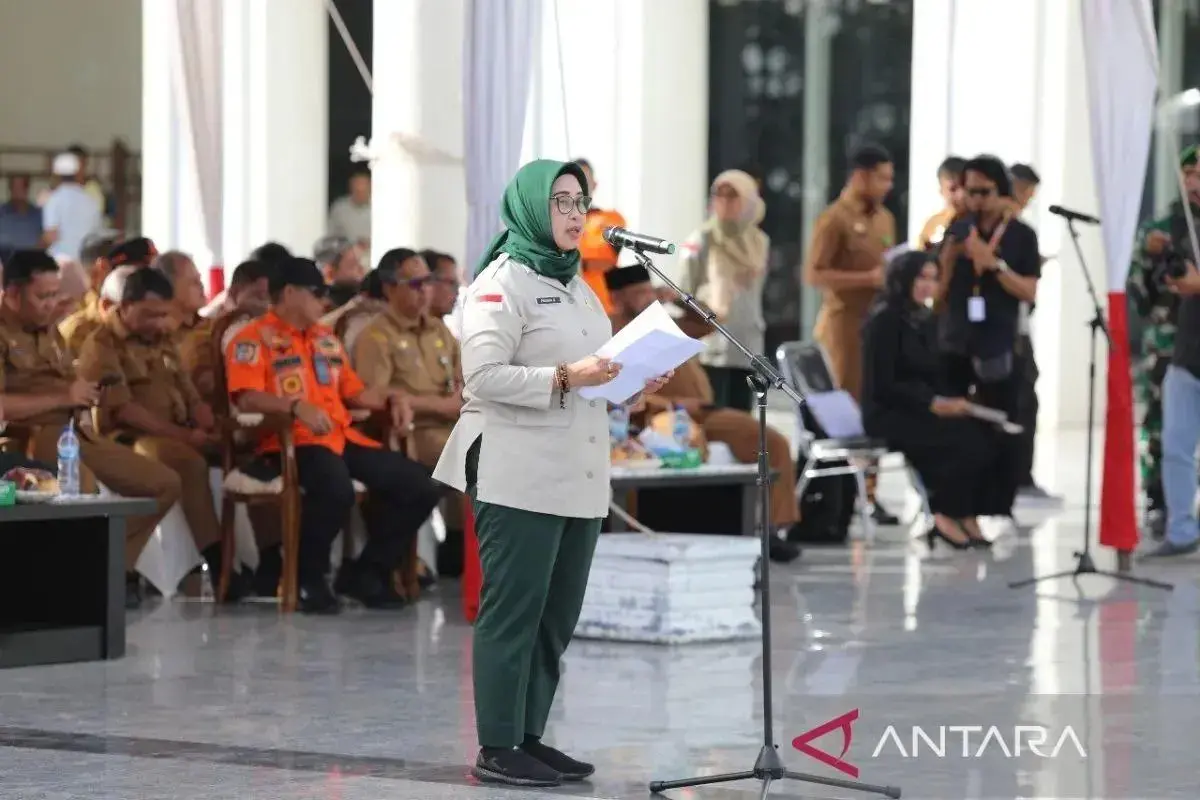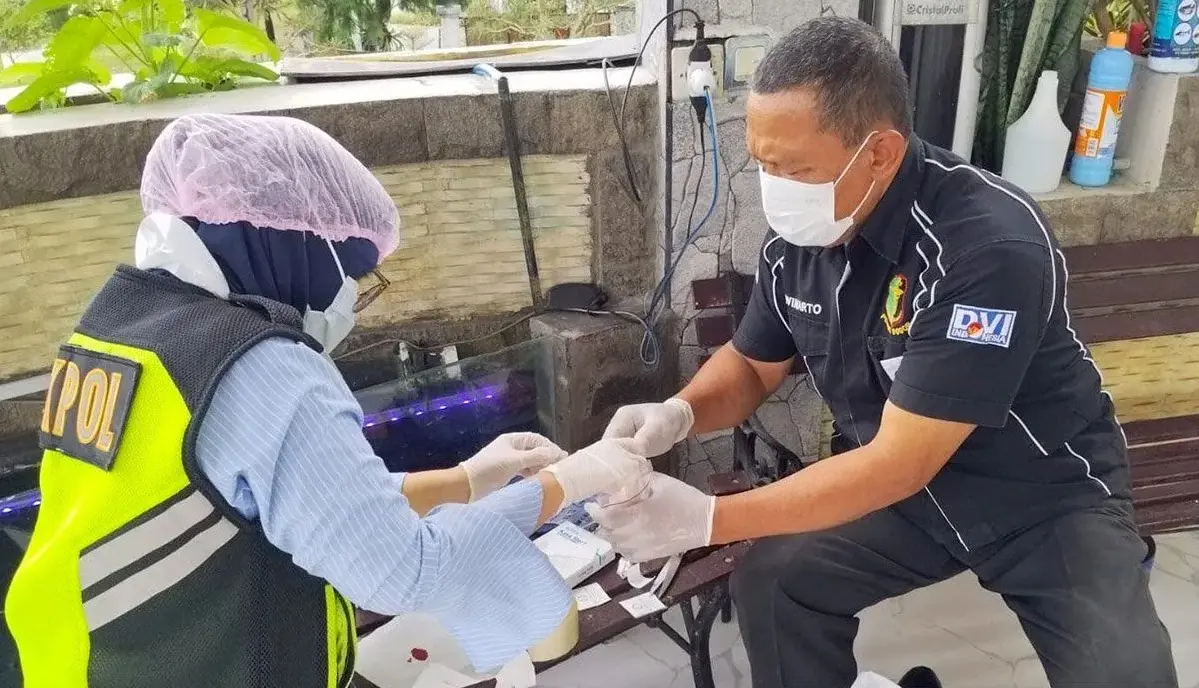inp.polri.go.id - Jakarta. The National Disaster Management Agency (BNPB) outlined six disaster risk mitigation planning patterns that are expected to contribute significantly for disaster mitigation in Indonesia.
Deputy Head of BNPB Disaster Prevention, Prasinta Dewi says that the International Day for Disaster Risk Reduction becomes important momentum for central and regional government, private parties, and the public to boost their preparation against many disaster potentials, particularly ahead of the rainy season.
“Thus, vigilance and preparedness are very important," Deputy Prasinta emphasized, on Wednesday (10/9/2024). She emphasized that disasters can happen at any time, making proper preparation is crucial in saving many lives.
BNPB highlighted the importance of the role of local governments in improving preparedness and mitigation through six planning patterns that have been prepared.
The first pattern is to ensure the readiness of logistics, equipment, early warning devices, and disaster communication systems. In addition, temporary and permanent evacuation sites, as well as evacuation route
https://tribratanews.polri.go.id/blog/nasional-3/bnpb-paparkan-6-pola-perencanaan-pengurangan-risiko-bencana-79701
BNPB Reveals Six Disaster Risk Mitigation Planning Patterns for Public Preparation
inp.polri.go.id - Jakarta. The National Disaster Management Agency (BNPB) outlined six disaster risk mitigation planning patterns that are expected to contribute significantly for disaster mitigation in Indonesia.
Deputy Head of BNPB Disaster Prevention, Prasinta Dewi says that the International Day for Disaster Risk Reduction becomes important momentum for central and regional government, private parties, and the public to boost their preparation against many disaster potentials, particularly ahead of the rainy season.
“Thus, vigilance and preparedness are very important," Deputy Prasinta emphasized, on Wednesday (10/9/2024). She emphasized that disasters can happen at any time, making proper preparation is crucial in saving many lives.
BNPB highlighted the importance of the role of local governments in improving preparedness and mitigation through six planning patterns that have been prepared.
The first pattern is to ensure the readiness of logistics, equipment, early warning devices, and disaster communication systems. In addition, temporary and permanent evacuation sites, as well as evacuation routes must be ensured to be usable and easily accessible.
The second pattern, BNPB encourages increased education, socialization, and literacy to the community to increase knowledge and understanding of the risks of earthquakes and tsunamis.
Furthermore, ensuring the availability of information boards, signs, and evacuation directions that are adequate and easy to understand by the community.
Then, strengthening coordination between regional devices, emergency mechanisms, and disaster management with stakeholders in the region. Contingency plan simulations must also be carried out periodically.
"These steps must be understood and implemented by all elements of the local government and the community to minimize the impact of losses due to disasters," said Deputy Prasinta.
(ad/ndt/pr/nm)
https://tribratanews.polri.go.id/blog/nasional-3/bnpb-paparkan-6-pola-perencanaan-pengurangan-risiko-bencana-79701
BNPB Reveals Six Disaster Risk Mitigation Planning Patterns for Public Preparation
inp.polri.go.id - Jakarta. The National Disaster Management Agency (BNPB) outlined six disaster risk mitigation planning patterns that are expected to contribute significantly for disaster mitigation in Indonesia.
Deputy Head of BNPB Disaster Prevention, Prasinta Dewi says that the International Day for Disaster Risk Reduction becomes important momentum for central and regional government, private parties, and the public to boost their preparation against many disaster potentials, particularly ahead of the rainy season.
“Thus, vigilance and preparedness are very important," Deputy Prasinta emphasized, on Wednesday (10/9/2024). She emphasized that disasters can happen at any time, making proper preparation is crucial in saving many lives.
BNPB highlighted the importance of the role of local governments in improving preparedness and mitigation through six planning patterns that have been prepared.
The first pattern is to ensure the readiness of logistics, equipment, early warning devices, and disaster communication systems. In addition, temporary and permanent evacuation sites, as well as evacuation routes must be ensured to be usable and easily accessible.
The second pattern, BNPB encourages increased education, socialization, and literacy to the community to increase knowledge and understanding of the risks of earthquakes and tsunamis.
Furthermore, ensuring the availability of information boards, signs, and evacuation directions that are adequate and easy to understand by the community.
Then, strengthening coordination between regional devices, emergency mechanisms, and disaster management with stakeholders in the region. Contingency plan simulations must also be carried out periodically.
"These steps must be understood and implemented by all elements of the local government and the community to minimize the impact of losses due to disasters," said Deputy Prasinta.
(ad/ndt/pr/nm)
s must be ensured to be usable and easily accessible.
The second pattern, BNPB encourages increased education, socialization, and literacy to the community to increase knowledge and understanding of the risks of earthquakes and tsunamis.
Furthermore, ensuring the availability of information boards, signs, and evacuation directions that are adequate and easy to understand by the community.
Then, strengthening coordination between regional devices, emergency mechanisms, and disaster management with stakeholders in the region. Contingency plan simulations must also be carried out periodically.
"These steps must be understood and implemented by all elements of the local government and the community to minimize the impact of losses due to disasters," said Deputy Prasinta.
(ad/ndt/pr/nm)












